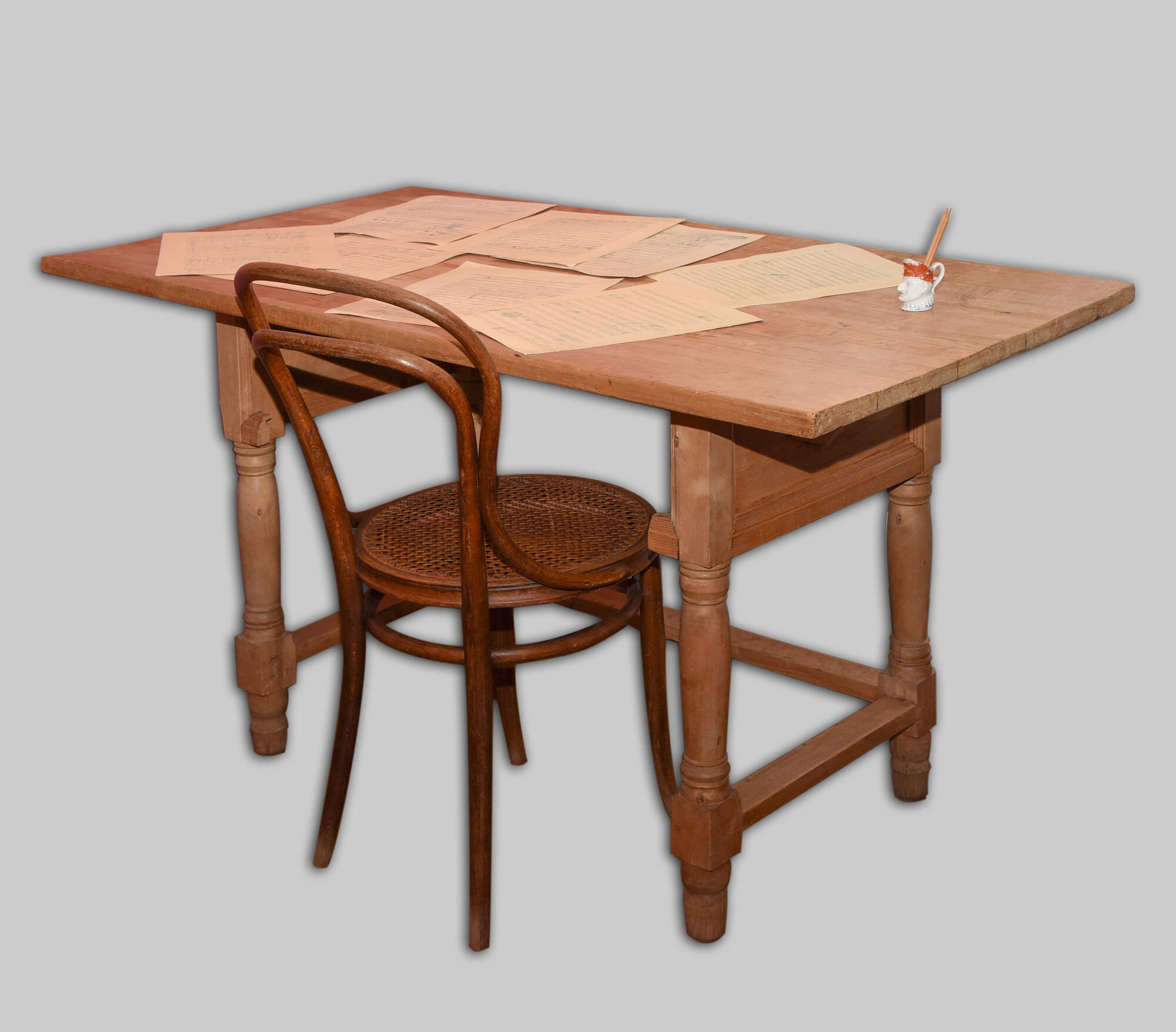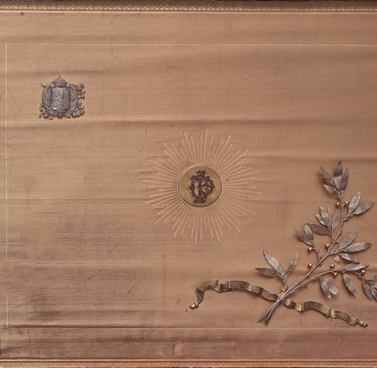Pyotr Tchaikovsky worked every day, relying mainly on discipline, and not on inspiration. He believed that inspiration does not come to lazy people and only presents itself to those who invite it with their actions and hard work.
At this desk, the composer created many of the works that made him famous. In everyday life, he preferred to use a minimum amount of items. For instance, all he needed to create music was music paper and a pencil.
Tchaikovsky worked on each piece in several stages: first — creating several sketches, then — narrating the text in sketches. After that, the composer moved on to finalizing the text and perfecting the details. Only after that Tchaikovsky would create new versions of the piece or its fragments. At the end, the finished composition was performed on the piano and corrected as needed.
Throughout his entire life, the composer maintained a set daily routine. Every day, he got up at six or seven o’clock in the morning, prayed, went for a short walk in the park, had breakfast, and then dedicated the time left until lunch to composing music. His lunch was served at 1 p.m. sharp. One day, a servant called Tchaikovsky to dinner at ten to one, but the composer checked the time and said: ‘I can work for another ten minutes’.
After lunch, the composer went for a walk for two to three hours. He believed taking such walks in solitude was necessary for his health. The fresh air had a positive effect on his thoughts. Plus, the creative process did not stop during the walks — the composer was constantly thinking of new musical themes. ‘In a normal state of mind, I can say that I always compose, every minute of every day, and in every situation’, Tchaikovsky wrote in 1878.
After the walk, he adapted his works for the orchestra. Although, Tchaikovsky did not consider this process hard work. After that, he did corrections, which he did not like at all, and wrote letters.
Despite the fact that the composer did not like to talk about the creative process, he did try to describe it in his letter to his close friend Nadezhda von Meck: ‘Usually, the seed of a future piece appears suddenly, in the most unexpected way. If the soil is fertile, i.e. if I am inclined to work, that seed takes root with incredible power and speed…’
At this desk, the composer created many of the works that made him famous. In everyday life, he preferred to use a minimum amount of items. For instance, all he needed to create music was music paper and a pencil.
Tchaikovsky worked on each piece in several stages: first — creating several sketches, then — narrating the text in sketches. After that, the composer moved on to finalizing the text and perfecting the details. Only after that Tchaikovsky would create new versions of the piece or its fragments. At the end, the finished composition was performed on the piano and corrected as needed.
Throughout his entire life, the composer maintained a set daily routine. Every day, he got up at six or seven o’clock in the morning, prayed, went for a short walk in the park, had breakfast, and then dedicated the time left until lunch to composing music. His lunch was served at 1 p.m. sharp. One day, a servant called Tchaikovsky to dinner at ten to one, but the composer checked the time and said: ‘I can work for another ten minutes’.
After lunch, the composer went for a walk for two to three hours. He believed taking such walks in solitude was necessary for his health. The fresh air had a positive effect on his thoughts. Plus, the creative process did not stop during the walks — the composer was constantly thinking of new musical themes. ‘In a normal state of mind, I can say that I always compose, every minute of every day, and in every situation’, Tchaikovsky wrote in 1878.
After the walk, he adapted his works for the orchestra. Although, Tchaikovsky did not consider this process hard work. After that, he did corrections, which he did not like at all, and wrote letters.
Despite the fact that the composer did not like to talk about the creative process, he did try to describe it in his letter to his close friend Nadezhda von Meck: ‘Usually, the seed of a future piece appears suddenly, in the most unexpected way. If the soil is fertile, i.e. if I am inclined to work, that seed takes root with incredible power and speed…’



